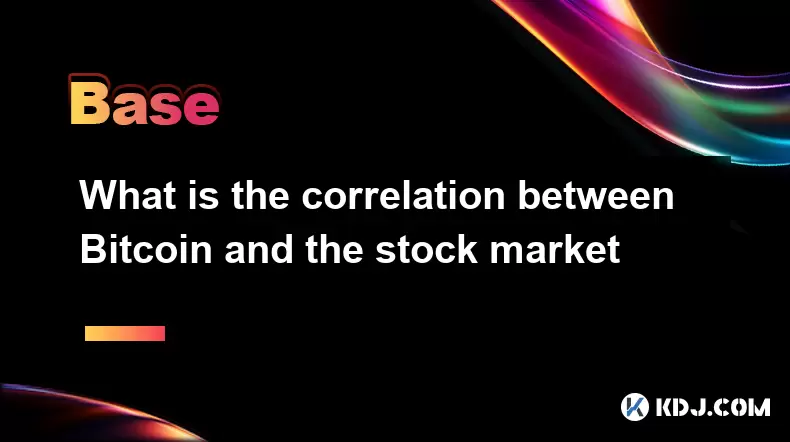-
 Bitcoin
Bitcoin $120400
1.77% -
 Ethereum
Ethereum $3615
7.90% -
 XRP
XRP $3.580
17.84% -
 Tether USDt
Tether USDt $1.001
0.06% -
 BNB
BNB $729.4
1.25% -
 Solana
Solana $179.9
5.04% -
 USDC
USDC $0.0000
0.01% -
 Dogecoin
Dogecoin $0.2311
8.22% -
 TRON
TRON $0.3226
4.04% -
 Cardano
Cardano $0.8490
12.85% -
 Hyperliquid
Hyperliquid $46.45
0.72% -
 Stellar
Stellar $0.4913
8.54% -
 Sui
Sui $4.027
2.00% -
 Chainlink
Chainlink $18.51
11.67% -
 Hedera
Hedera $0.2818
21.51% -
 Avalanche
Avalanche $24.03
7.40% -
 Bitcoin Cash
Bitcoin Cash $508.5
2.90% -
 Shiba Inu
Shiba Inu $0.00001496
3.24% -
 UNUS SED LEO
UNUS SED LEO $8.961
1.83% -
 Toncoin
Toncoin $3.264
3.13% -
 Litecoin
Litecoin $104.6
8.15% -
 Polkadot
Polkadot $4.389
6.11% -
 Uniswap
Uniswap $9.924
10.63% -
 Monero
Monero $337.9
0.49% -
 Pepe
Pepe $0.00001376
2.79% -
 Bitget Token
Bitget Token $4.830
2.46% -
 Ethena USDe
Ethena USDe $1.001
0.05% -
 Dai
Dai $1.000
0.02% -
 Aave
Aave $325.2
1.66% -
 Bittensor
Bittensor $423.7
-0.85%
What is a crypto tumbler or mixer
A crypto tumbler mixes users' funds to obscure transaction trails, enhancing privacy by breaking the link between sender and receiver.
Jul 16, 2025 at 10:35 pm

What is a Crypto Tumbler or Mixer
A crypto tumbler, also known as a crypto mixer, is a service designed to obscure the trail of cryptocurrency transactions, thereby enhancing user privacy. Since most blockchain networks are transparent by design, every transaction is publicly recorded and can be traced back to its origin. A crypto tumbler aims to break this traceability by mixing different users' funds together before redistributing them.
The primary function of a crypto tumbler is to make it extremely difficult for third parties to link the sender and receiver of a particular cryptocurrency transaction.
This becomes particularly relevant when individuals want to protect their financial privacy or prevent tracking by malicious actors, government agencies, or corporate entities. By using a tumbler, users can achieve a higher degree of anonymity than they would with standard wallet transfers.
How Does a Crypto Tumbler Work
Crypto tumblers work by taking cryptocurrency from multiple users, pooling it into a single transaction, and then redistributing the coins to new addresses. This process effectively severs the direct link between the original sender and the final recipient.
Here’s how the typical tumbler process unfolds:
- Users send their cryptocurrency to the tumbler's address.
- The tumbler collects all incoming funds into a large pool.
- After a certain delay (which may vary), the tumbler sends back an equivalent amount of cryptocurrency minus a small fee, to one or more new addresses provided by the user.
Importantly, the coins returned to users are not the same ones they sent; they come from the collective pool.
Some advanced mixers may introduce time delays or split the output into multiple transactions to further obfuscate the flow of funds.
Types of Crypto Tumblers
There are two main types of crypto tumblers: centralized and decentralized.
- Centralized Tumblers: These are operated by a single entity that controls the mixing process. While often easier to use, they carry the risk of trusting a third party with your funds and potentially logging your activity.
- Decentralized Tumblers: These operate via smart contracts or peer-to-peer protocols, reducing reliance on a central authority. They are generally considered more secure and private but may require more technical knowledge to use effectively.
Each type comes with trade-offs in terms of usability, trust, and security.
Some popular examples include CoinJoin (used in wallets like Wasabi Wallet) and centralized services like Blender.io or Helix by Samourai Wallet.
Why People Use Crypto Mixers
Privacy is the most common reason people turn to crypto mixers. In a world where blockchain analytics companies track transactions for compliance, surveillance, or marketing purposes, many users feel the need to shield their financial activities.
- Protection from identity theft or doxxing
- Preventing merchants or exchanges from profiling spending habits
- Ensuring financial independence without oversight from authoritarian regimes
For some, especially those living under oppressive governments, crypto mixers represent a critical tool for preserving personal freedom.
However, it's worth noting that mixers have also been associated with illicit activities due to their ability to hide transaction origins.
Risks and Considerations When Using a Tumbler
While crypto mixers offer enhanced privacy, they are not without risks. One major concern is the potential for fraud or theft. Some centralized mixers have disappeared with users’ funds after collecting deposits.
- The possibility of the mixer logging IP addresses or transaction details
- Regulatory scrutiny increasing as governments crack down on anonymity tools
- Loss of funds if the mixer service shuts down unexpectedly
Users should thoroughly research any mixer before depositing funds and consider using open-source or decentralized alternatives whenever possible.
Additionally, using a mixer might raise red flags with exchanges or financial institutions, leading to account freezes or increased verification requirements.
Frequently Asked Questions
Q: Are crypto mixers legal?
In many jurisdictions, using a crypto mixer is not explicitly illegal, but regulatory attitudes are evolving. Some countries have imposed restrictions on services that provide anonymity-enhancing features.
Q: Can blockchain analysis detect mixed transactions?
While mixers significantly complicate tracking, advanced forensic tools may still identify patterns or correlations in transaction data, especially if best practices are not followed.
Q: Do I need to pay a fee to use a crypto tumbler?
Yes, most mixers charge a small percentage-based fee for their services. Fees vary depending on the platform and the level of privacy offered.
Q: How long does a tumbler transaction take?
The time varies depending on the service. Some mixers introduce random delays to enhance privacy, so transactions can take anywhere from minutes to hours.
Disclaimer:info@kdj.com
The information provided is not trading advice. kdj.com does not assume any responsibility for any investments made based on the information provided in this article. Cryptocurrencies are highly volatile and it is highly recommended that you invest with caution after thorough research!
If you believe that the content used on this website infringes your copyright, please contact us immediately (info@kdj.com) and we will delete it promptly.
- Bitcoin Whale's $9.6B Galaxy Digital Move: Profit-Taking or Strategic Play?
- 2025-07-18 14:30:12
- Alchemy Pay, Crypto-Finance, and Hong Kong: A Budding Hub?
- 2025-07-18 14:30:12
- Dave Portnoy's XRP Regret: A Crypto Dump Disaster?
- 2025-07-18 15:10:12
- XRP Price Surges to 7-Year High: Expert Predictions and Market Analysis
- 2025-07-18 15:10:12
- Crypto Market Cap Nears $4T: Can It Rival the Biggest Companies?
- 2025-07-18 14:50:12
- Binners Alpha, TrutaAI, Andken ERA: A New Era?
- 2025-07-18 14:50:12
Related knowledge

What is the Bitcoin dominance index
Jul 12,2025 at 10:35pm
Understanding the Bitcoin Dominance IndexThe Bitcoin Dominance Index, often abbreviated as BTC.D, is a metric used to measure Bitcoin's market capital...

What is the Bitcoin dominance index
Jul 11,2025 at 04:29am
What is the Bitcoin Dominance Index?The Bitcoin Dominance Index is a metric used to gauge Bitcoin's market capitalization relative to the total market...

What is the correlation between Bitcoin and the stock market
Jul 18,2025 at 04:56am
Understanding the Correlation Between Bitcoin and the Stock MarketThe correlation between Bitcoin and the stock market has become a topic of increasin...

Can crypto be a hedge against inflation
Jul 14,2025 at 12:21am
Understanding the Concept of Hedging Against InflationInflation refers to the general increase in prices and fall in the purchasing value of money ove...

Can crypto be a hedge against inflation
Jul 12,2025 at 12:07pm
Understanding the Role of Blockchain in Decentralized Finance (DeFi)Blockchain technology serves as the backbone of decentralized finance, offering a ...

What are account abstraction wallets
Jul 13,2025 at 01:43am
Understanding the Concept of Account AbstractionAccount abstraction is a term frequently used in the Ethereum ecosystem, particularly within discussio...

What is the Bitcoin dominance index
Jul 12,2025 at 10:35pm
Understanding the Bitcoin Dominance IndexThe Bitcoin Dominance Index, often abbreviated as BTC.D, is a metric used to measure Bitcoin's market capital...

What is the Bitcoin dominance index
Jul 11,2025 at 04:29am
What is the Bitcoin Dominance Index?The Bitcoin Dominance Index is a metric used to gauge Bitcoin's market capitalization relative to the total market...

What is the correlation between Bitcoin and the stock market
Jul 18,2025 at 04:56am
Understanding the Correlation Between Bitcoin and the Stock MarketThe correlation between Bitcoin and the stock market has become a topic of increasin...

Can crypto be a hedge against inflation
Jul 14,2025 at 12:21am
Understanding the Concept of Hedging Against InflationInflation refers to the general increase in prices and fall in the purchasing value of money ove...

Can crypto be a hedge against inflation
Jul 12,2025 at 12:07pm
Understanding the Role of Blockchain in Decentralized Finance (DeFi)Blockchain technology serves as the backbone of decentralized finance, offering a ...

What are account abstraction wallets
Jul 13,2025 at 01:43am
Understanding the Concept of Account AbstractionAccount abstraction is a term frequently used in the Ethereum ecosystem, particularly within discussio...
See all articles

























































































